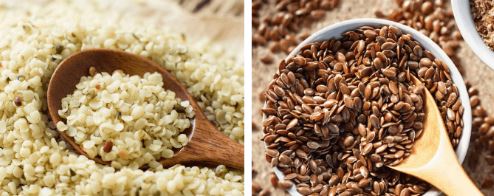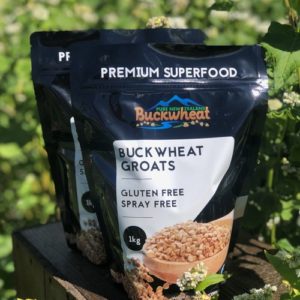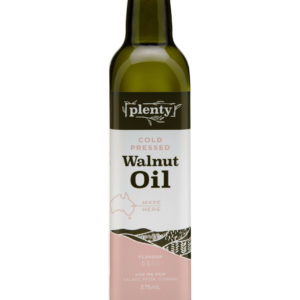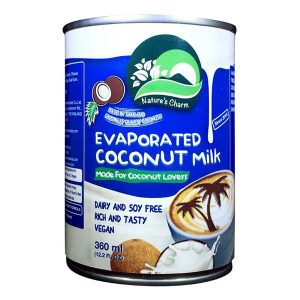What do Hemp Seed and Flax Seed have in Common?
- Plant based, vegetarian, vegan protein sources.
- Complete proteins – all your essential amino acids
- Gluten free* Contain heart healthy polyunsaturated fats (omega 3 & 6), which support immune function & brain function and are cholesterol lowering and anti-inflammatory
- All are a source of both Protein & fibre
Omega Fatty Acids – all you need to know.
Omega fatty acids are simply components of fats. What makes them so important though, is that they are incorporated into the membranes of every cell in the body and so have a huge array of functions.
Omega 3 and Omega 6 – these are the essential fatty acids.
The two major classes of polyunsaturated fatty acids (PUFAs) are the omega-3 and omega-6 fatty acids. Alpha-linolenic acid (ALA) is the parent fatty acid of the omega-3 family, and Linoleic acid is the parent fatty acid of the omega-6 family. These fatty acids cannot be synthesized in the body and must be supplied by the diet; hence they are called essential fatty acids.
Omega-3 and omega-6 fatty acids are important in the normal functioning of all tissues of the body, and therefore they should be included in the diet each day.
There is also a third omega family, omega-9. While omega-9 is necessary for health, it is not “essential” as the healthy human body can manufacture this fatty acid itself.
Omega 3’s
Omega-3 fatty acids are extremely important for our health — probably the most important of the three.
They aid in circulation, the formation of cell walls, oxygen uptake and the production prostaglandins which regulate heart rate, blood pressure, fertility and inflammation. Omega-3 fatty acids also tend to suppress inflammation, which is the cause of so many of the degenerative diseases that plague us today. They do this by countering the pro-inflammatory effects of omega-6’s.
Because the parent omega-3 ALA is not manufactured by our bodies it’s critical that we get this fatty acids through our diets. What complicates the matter is that omega-3 is the one most lacking in our modern diet. Nonetheless, ALA, being the plant source of omega -3, can be found in many foods such as flaxseed, nuts, oils and green leafy vegetables — we just have to remember to include these foods in our daily choices.
Good omega-3 ALA sources
- The absolute best plant source of omega-3 is flaxseed and its oil. One tablespoon (15g) of ground flaxseed will provide approximately 3.6g of ALA (24g/100g) and 1 tablespoon of flax seed oil will provide approximately 9g of ALA (60g/100g).
- Note: flaxseeds need to be ground for your body to be able to absorb the omega-3 from them (you can grind flaxseeds in a spice or coffee grinder). Once flaxseeds are ground, the shells don’t protect them from oxidation anymore and you will need to store them in the refrigerator or freezer, just like the oils.
- Seed, nut, and vegetable oils are also good sources of omegas, but beware – not all oils have the same omega profile. For example, New Zealand grown flax seed oil typically contains 60% ALA, canola oil approximately 11%, hemp seed oil approximately 16% and soybean oil approximately 8%.
- ALA omega 3 can also be found in small amounts in green leafy vegetables (like lettuce, broccoli, kale and spinach) and legumes (like mungo, kidney, navy, pinto, lima beans, peas and split peas).
Many people have a deficiency of omega-3 without realising it, since the symptoms can often be attributed to other health conditions or nutrient deficiencies. Deficiencies in omega-3 have been linked to, among other things, poor vision, diminished immune function, fatigue, dry and/or itchy skin, brittle hair and nails, constipation, depression, frequent colds, poor concentration, joint pain, increased LDL levels (‘bad’ cholesterol), learning disorders and increased blood clot formation and heart disease.
The omega-3 metabolic pathway is an anti-inflammatory pathway and thereby provides the health benefits that are present when inflammation is low which include decreased risk for cancer, diabetes and cardiovascular disease among a myriad of other health benefits.
Omega-3’s are easily damaged by heat, so the oils should not be cooked with. They are also damaged by oxidation; that’s why you should store the oils in dark bottles in the refrigerator or freezer.
EPA and DHA
Two other important omega-3’s are EPA and DHA. DHA and EPA are present in fish, fish oils, and krill oils. Microalgae synthesise ALA into EPA and DHA. When fish consume phytoplankton which consumed microalgae, they accumulate EPA and DHA in their tissues.
When we humans consume ALA omega-3, the body breaks down ALA into EPA and DHA by way of an enzyme called Delta-6 Desaturase. However, the conversion rate is very different for each individual as LA (omega-6) is also metabolized through the same enzyme. In essence this enzyme has to compete for space between LA and ALA.
Omega-6 is found in a lot of vegetable oils and high fat processed foods, and in the last several decades the Western diet has become dominated by these omega-6 fatty acids. In these cases, there is significant competition for the enzyme needed to convert flax seed oil into EPA and DHA, and as a result little ALA is converted.
Omega-6’s
As in the family of omega 3’s, there’s one member of the omega 6 family that plays the role of the parent (essential) fatty acid: linoleic acid (LA). What’s different about LA is that it is not difficult to find in our typical diet. In reality, most of us get too much omega-6 in our popular foods. Omega-6’s can be found abundantly in many of our common vegetable cooking oils: grape seed, soybean oil, sunflower oil, hemp seed oil and corn oil. They’re also common ingredients in many of the foods we consume, which is why most of us have a heavily imbalanced ratio of omega-6’s to omega-3’s.
The omega-6 metabolic pathway can be either pro-inflammatory or anti-inflammatory. Diets however that are low in omega-3 fatty acids and high in omega-6 fatty acids will tend to result in higher levels of inflammation especially if the diet of concern lacks important nutrients such as magnesium and B vitamins. Higher levels of inflammation will result in increased risk for chronic degenerative diseases such as those mentioned above and will tend to accelerate the aging process.
Omega-9’s
Omega-9’s are the most abundant fatty acids of all in nature, and they are not in short supply in our diets. They are also not considered essential because our bodies can make omega-9’s from unsaturated fat in our bodies. Omega-9 is mainly used when there is an insufficiency of either omega-3, omega-6 or both. When the body doesn’t have enough omega-3 or omega-6, it tries to compensate by producing omega-9 fatty acids to take their place. Omega-9 derivatives aren’t as effective as omega-3 or omega-6 though and our health will eventually suffer.
Omega-9’s are found in animal fats and vegetable oils, most notably olive oil. Interestingly, the oil made by our skin glands is the same omega-9 fatty acid found abundantly in olive oil: oleic acid. Olive oil also contains a saturated fatty acid known as palmitic acid, but no 6’s or 3’s.
A Healthy Balance
Since omega-6 fatty acids compete with omega-3 fatty acids for use in the body, it is important to take these fatty acids in the proper ratio; a ratio between 1:1 and 4:1 omega:6:omega-3 is often considered as being optimal. Since most diets are very rich in omega-6 and low in omega-3, the ratio is often somewhere between 10:1 and 20:1.
The ratio of 6’s to 3’s is an important consideration for our health because LA (omega-6) tends to gear up the inflammatory process. The inflammatory process is crucial to survival, but it also requires an efficient set of checks and balances. Without effective and timely up-regulation and down-regulation through a balance between omega-6’s and omega-3’s, inflammation can become chronic and problematic, leading to heart disease, diabetes, and Alzheimer’s — to name a few.
One must remember that both omega-3 and omega-6 fatty acids are in fact essential fatty acids and are both necessary for the body to function properly. The issue at hand is getting the balance right. It is important to eat a diet that is low in processed foods and with fat mainly coming from omega-3 fatty acids. Choose edible oils carefully, avoid heating EFA-rich foods where possible, look for unrefined versions of EFA-rich oils, and pay attention to the omega-3/omega-6 balance.
Benefits.
Unlike many of the health fads of the last few decades, the volume of positive research around essential fatty acids has meant that they are now established as an indispensable part of a healthy diet.
There are a number of benefits to taking flax seed oil over other omega-3 supplements and the first of course it that it is the best alternative for vegetarians and vegans since it comes from an annual flowering plant.
Another belief is that since ALA is the parent to EPA and DHA the body is better able to take what it needs rather than being saturated with an already refined form of the fatty acids. It also contains nearly twice as much omega-3 as fish oil and there is no mercury or other contaminants found in flax seed oil. Many feel that it is also a much more sustainable source of fatty acids than fish. Whole flaxseed, not flax seed oil, contains lignans which are powerful antioxidants that the body can use to fight cancer causing substances.
The ability to increase your metabolism, reduce serum blood sugar levels and assist with digestion remain 3 of the greatest flax seed oil benefits. Over time and in the right combination some studies have shown an ability to lower cholesterol and help reduce heart and circulatory diseases. Omega-3 fatty acids have been shown to have an anti-inflammatory effect on the body and this helps to reduce joint and many other degenerative disorders.






